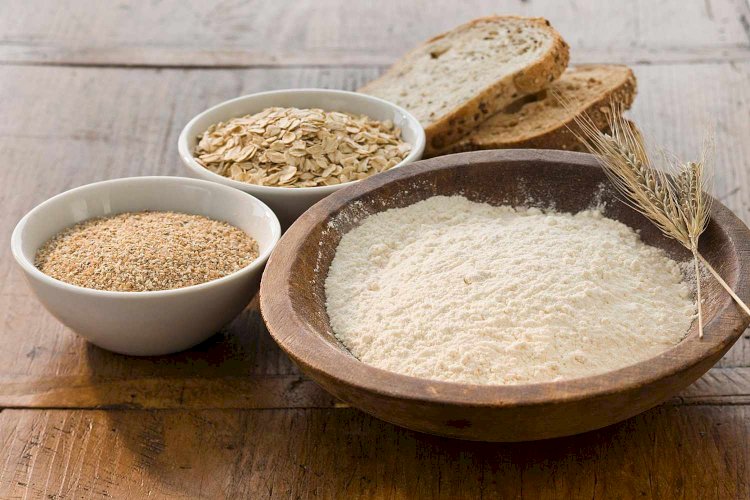Global Wheat Flour Market Size Expands at Steady CAGR of 5.04%
BlueWeave Consulting, a leading strategic consulting and market research firm, in its recent study, estimated the Global Wheat Flour Market size at USD 286.95 billion in 2023. During the forecast period between 2024 and 2030, BlueWeave expects the Global Wheat Flour Market size to grow at a CAGR of 5.04% reaching a value of USD 404.93 billion by 2030

BlueWeave Consulting, a leading strategic consulting and market research firm, in its recent study, estimated the Global Wheat Flour Market size at USD 286.95 billion in 2023. During the forecast period between 2024 and 2030, BlueWeave expects the Global Wheat Flour Market size to grow at a CAGR of 5.04% reaching a value of USD 404.93 billion by 2030. The Global Wheat Flour Market is propelled by the increasing preference for processed foods globally. Wheat flour, a vital ingredient in convenience foods like bread, biscuits, waffles, and ready-to-eat meals, is in high demand. The expanding food industry, coupled with improved economic conditions, contributes to the market's growth. The widespread use of wheat flour, rich in gluten that enhances dough strength and elasticity, is evident in instant foods like noodles and ready-to-cook tortillas. Moreover, rising health consciousness fuels the demand for clean-label variants like gluten-free, organic, and fortified wheat flour, driving market growth on a global scale.
Opportunity – Innovations and new product developments
The Global Wheat Flour Market experiences robust expansion driven by relentless innovations and the development of new products. As consumer preferences evolve, industry players are leveraging advanced technologies to create novel wheat flour products that cater to diverse culinary needs. The introduction of fortified and specialty flours, gluten-free variants, and sustainable production practices enhance market competitiveness. These innovative approaches not only address health and dietary concerns but also contribute to the market's resilience, fostering sustained growth. As a result, the Global Wheat Flour Market thrives on the dynamic landscape shaped by continuous advancements in product offerings and production methodologies
Impact of Escalating Geopolitical Tensions on Global Wheat Flour Market
The escalating geopolitical tensions among Russia, China, and the United States, exacerbated by Russia's alignment with China, have significant implications for the Global Wheat Flour Market. The 70 million-ton grain supply agreement between Russia and China signals a potential shift in trade blocs, with the United states, Australia, and Europe forming one bloc, and Russia and China forming another. The dynamic could lead to China importing more wheat from Russia, impacting global grain trade patterns. The ongoing war in Ukraine, influenced by deeper divisions between democratic nations and authoritarian regimes, adds instability to agricultural trade. Tensions in the Middle East, including the Israel-Hamas war and the potential Chinese invasion of Taiwan, further contribute to market volatility. China's substantial grain purchases raise concerns about motives, including the possibility of military actions, intensifying uncertainties in the Wheat Flour Market in the coming years.
Sample Request @ https://www.blueweaveconsulting.com/report/wheat-flour-market/report-sample
Global Wheat Flour Market
Segmental Coverage
Global Wheat Flour Market – By Type
Based on type, Global Wheat Flour Market is divided into Whole Wheat Flour and All-Purpose Flour segments. The all-purpose flour segment is a larger type in the Global Wheat Flour Market, valued for its versatility in baking and cooking. Semolina flour experiences growth driven by the global surge in pasta and couscous production. Whole-wheat flour gains traction amid health-conscious trends due to its enriched nutritional profile. Fine wheat flour distinguishes itself in premium baking with its ability to produce refined textures. The enduring demand for bread flour remains strong as a staple in global bread consumption. Specialized flours, including gluten-free and organic variants, respond to dietary preferences and health-conscious choices, shaping the overall market landscape.
Global Wheat Flour Market – By Category
Based on category, Global Wheat Flour Market is split into Organic Wheat Flour and Conventional Wheat Flour segments. The organic wheat flour segment is a larger category, and its growth is driven by increased demand for organic foods. Consumers seek products free from pesticides, synthetic fertilizers, and GMOs due to health and environmental concerns. The perception of organic food as safer and more nutritious, particularly in the context of rising chronic diseases, propels the demand for organic wheat flour. Manufacturers respond by offering various packaging sizes for retail markets. Additionally, the industrial manufacturing sector contributes to the surge in demand for organic wheat flour, particularly in the production of organic packaged foods like bread, noodles, pasta, pizza, and bakery items.
Competitive Landscape
Global Wheat Flour Market is fiercely competitive. Major companies in the market include General Mills Inc, Grain Craft, ITC Limited, Cargill Incorporated, Allied Pinnacle Pty Limited, Archer Daniels Midland Company, The King Milling Company, Ardent Mills LLC, and Manildra Milling Pvt Ltd. These companies use various strategies, including increasing investments in their R&D activities, mergers, and acquisitions, joint ventures, collaborations, licensing agreements, and new product and service releases to further strengthen their position in the Global Wheat Flour Market.
Contact Us:
BlueWeave Consulting & Research Pvt Ltd
+1 866 658 6826 | +1 425 320 4776 | +44 1865 60 0662






























